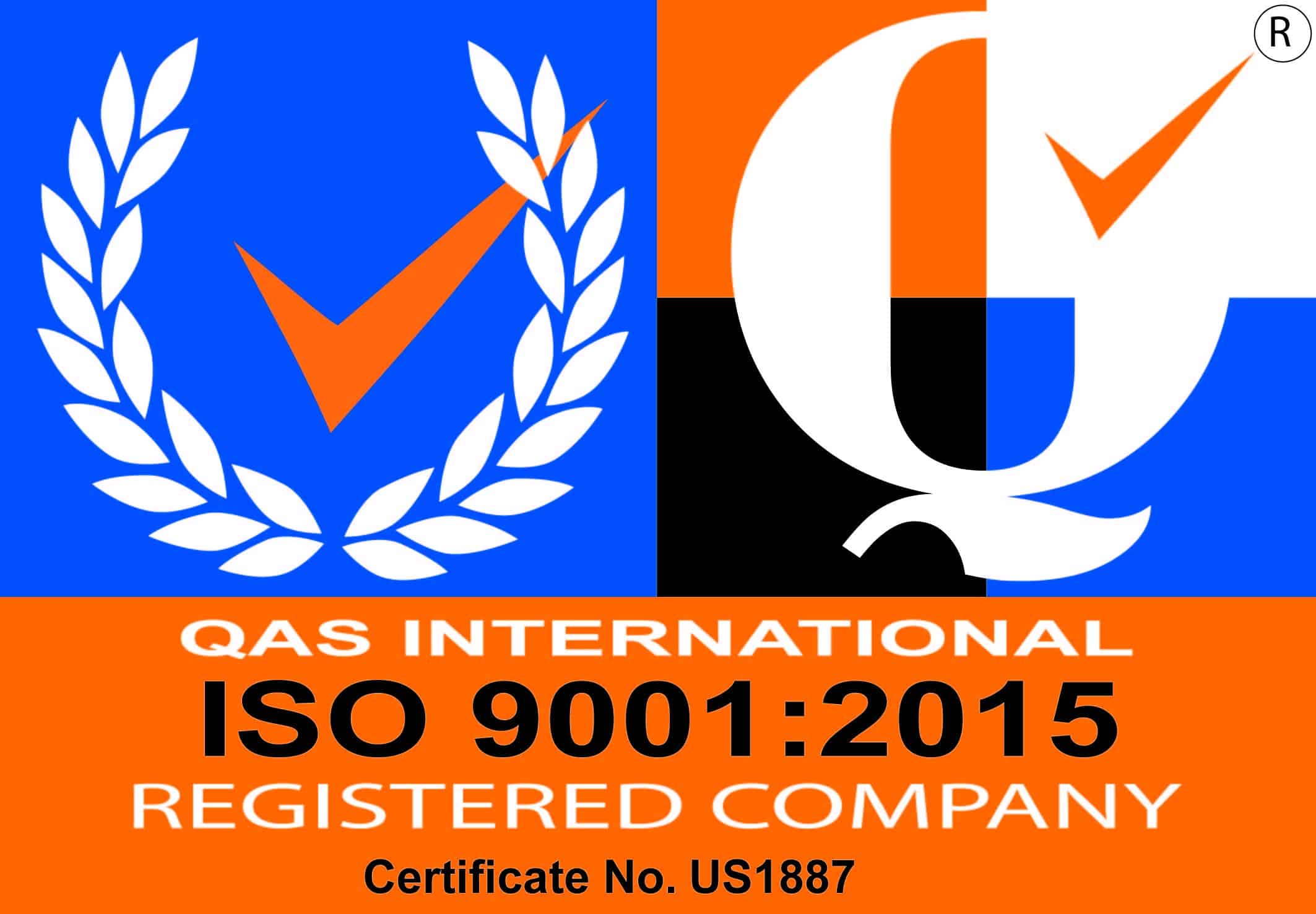Home » 6 Things To Consider When Selecting Packaging Materials
6 Things To Consider When Selecting Packaging Materials

Selecting the right packaging materials is a critical decision for businesses, impacting everything from product protection and shelf life to brand perception and sustainability. With a variety of materials available, each offering different benefits and challenges, understanding what to consider when choosing packaging options can greatly influence your business outcomes. Here are six essential factors to evaluate when selecting packaging materials for your products.
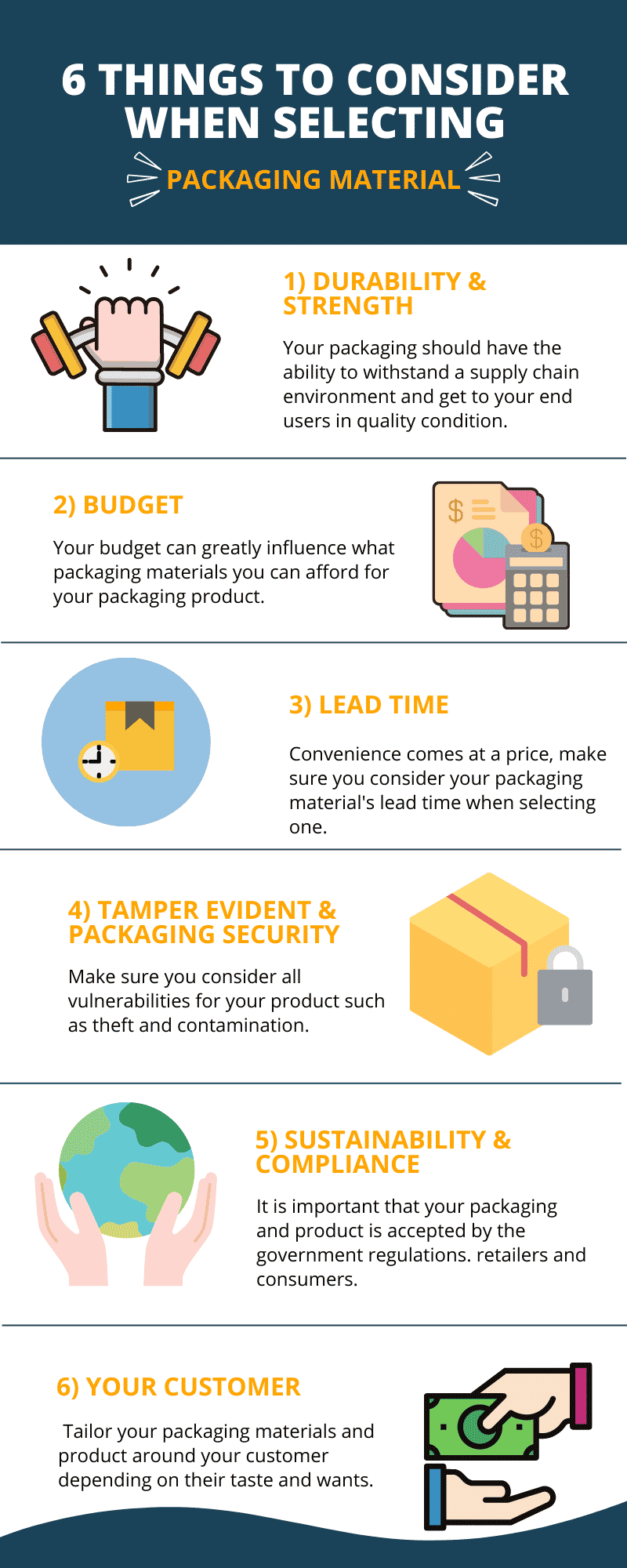
Durability and Quality
The durability and quality of your packaging are paramount as they protect your product throughout the supply chain and influence customer perceptions of your brand.
Considerations for Durability and Quality:
- Product Requirements: Evaluate the size, shape, weight, and vulnerability of your product. Heavier and more fragile items might require sturdier materials like corrugated fiberboard or thick plastics, whereas lighter items may be sufficiently protected with lighter materials such as paperboard or thin plastic.
- Protection Needs: Determine the level of protection required against factors such as moisture, UV rays, and mechanical damage. This may influence the choice of material as well as the need for additional protective features like coatings or reinforcements.
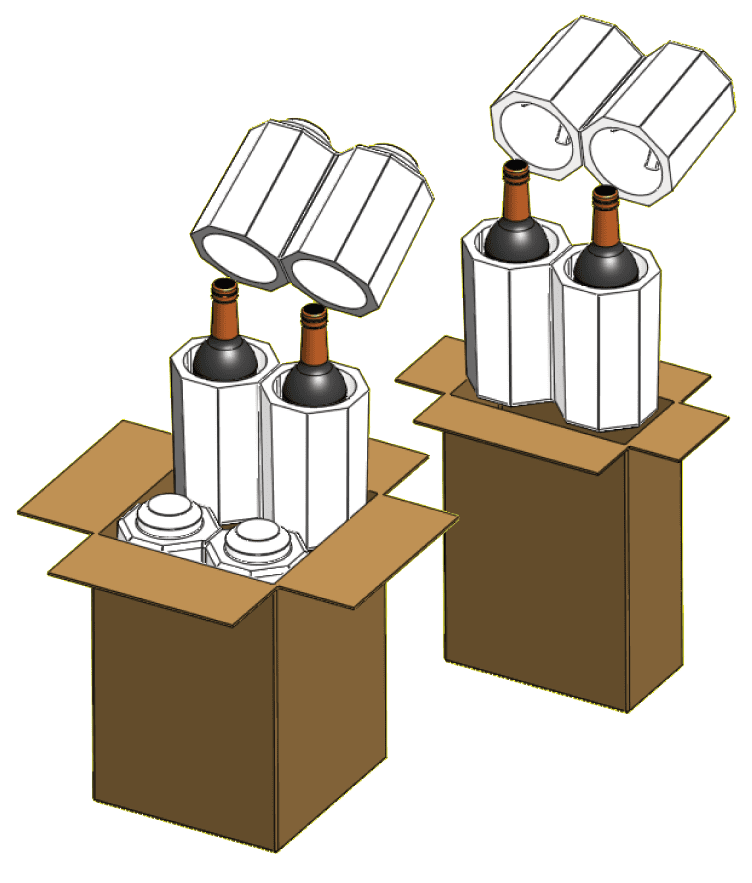
Budget
Your budget will significantly influence the type of packaging materials you can afford. It’s crucial to balance cost with the quality and functionality needed to protect and sell your product effectively.
Budgetary Considerations:
- Material Costs: Compare the cost of various materials and consider their trade-offs in terms of durability and aesthetics. For example, while corrugated solutions might be more expensive than paperboard, they offer enhanced protection.
- Long-Term Savings: Consider investing in higher-quality materials that might reduce the need for replacements or returns due to damage, potentially saving money in the long run.
Lead Time
The time it takes to produce and deliver your packaging can impact your ability to meet market demands and maintain inventory levels.
Lead Time Factors:
- Production Schedules: Choose materials that align with your production schedules and inventory needs. High-demand periods may require materials with shorter lead times.
- Supplier Reliability: Ensure your supplier can consistently meet your lead time requirements to avoid disruptions in your supply chain.

Tamper Evident and Secure
Securing your products against tampering is crucial for maintaining customer trust and ensuring the integrity of your products upon delivery.
Security Features:
- Tamper-Evident Seals: Consider materials and designs that incorporate tamper-evident features such as seals, shrink wraps, or security tapes.
- Durability of Seals: Ensure that the materials selected are compatible with security features and will hold up under normal handling conditions.
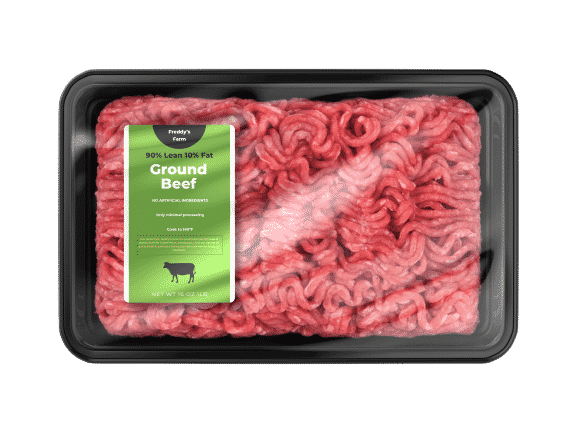
Sustainability and Compliance
With increasing consumer and regulatory demands for environmental responsibility, selecting sustainable packaging materials is more important than ever.
Sustainable Packaging Choices:
- Recyclable Materials: Opt for materials that are easily recyclable within most municipal systems, such as certain plastics, paperboard, and corrugated fiberboard.
- Biodegradable Options: Consider biodegradable or compostable materials if they meet the protective requirements of your products.
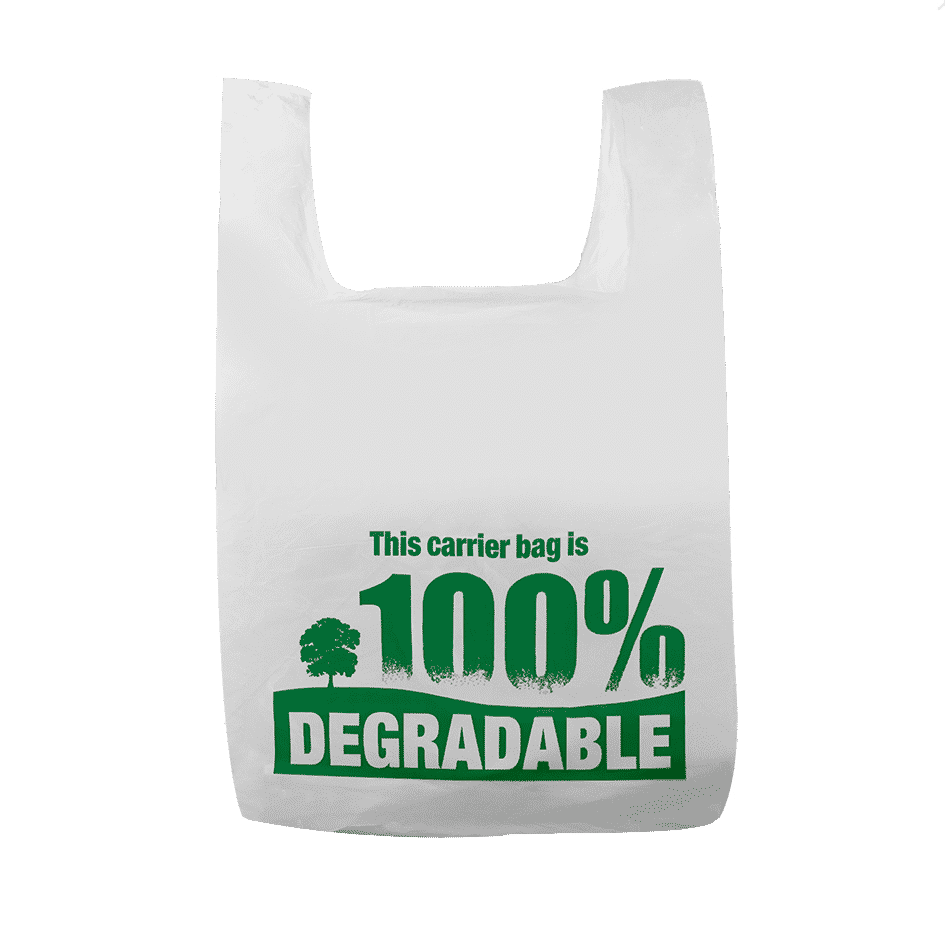
Understanding Your Customer
Knowing your target market is essential in selecting the right packaging materials that resonate with your consumers’ values and expectations.
Customer-Centric Packaging:
- Market Preferences: Tailor your packaging materials to the preferences of your market. Luxury consumers may prefer high-end materials that reflect the quality of the product, whereas eco-conscious consumers may prioritize sustainable materials.
- User Convenience: Consider ease of use, such as easy-open features or resealable packages, which can enhance the customer experience and satisfaction.
Choosing the right packaging materials involves a careful balance of functional, aesthetic, and economic factors. By considering these six aspects, businesses can select materials that not only protect their products effectively but also align with brand values, meet consumer expectations, and stay within budget constraints. Partnering with an experienced packaging provider like Brown Packaging can help navigate these choices, ensuring you select the best materials for your products’ specific needs.
Contact Brown Packaging for expert guidance and to explore a wide range of packaging solutions tailored to your business requirements.
Rigid boxes are the gold standard of premium packaging. Whether used for cosmetics, electronics, fashion, or high-end subscription kits, rigid boxes do more than protect
Understanding One-Piece FOL and Three-Piece Bike Shipping Boxes Choosing the right box style is essential when shipping bicycles—especially for brands, manufacturers, and distributors focused on
Corrugated boxes are essential to shipping, retail, and e-commerce—but when you introduce custom printing, the stakes (and the opportunities) rise. Print isn’t just about looks—it’s
When it comes to shipping bikes, selecting the right type of corrugated box is essential to ensure product protection, ease of handling, and cost efficiency.
Before committing to a full production run, businesses often receive packaging samples to evaluate fit, functionality, print quality, and overall design. Whether it’s a digital
Choosing the right corrugated box size is crucial for product protection, shipping efficiency, and cost savings. Whether you’re packing a single item or multiple products,
Home » 6 Things To Consider When Selecting Packaging Materials

Corrugated bin boxes are indispensable in warehouses, retail spaces, and offices. They are designed to hold, organize, and transport items efficiently. However, to ensure safety
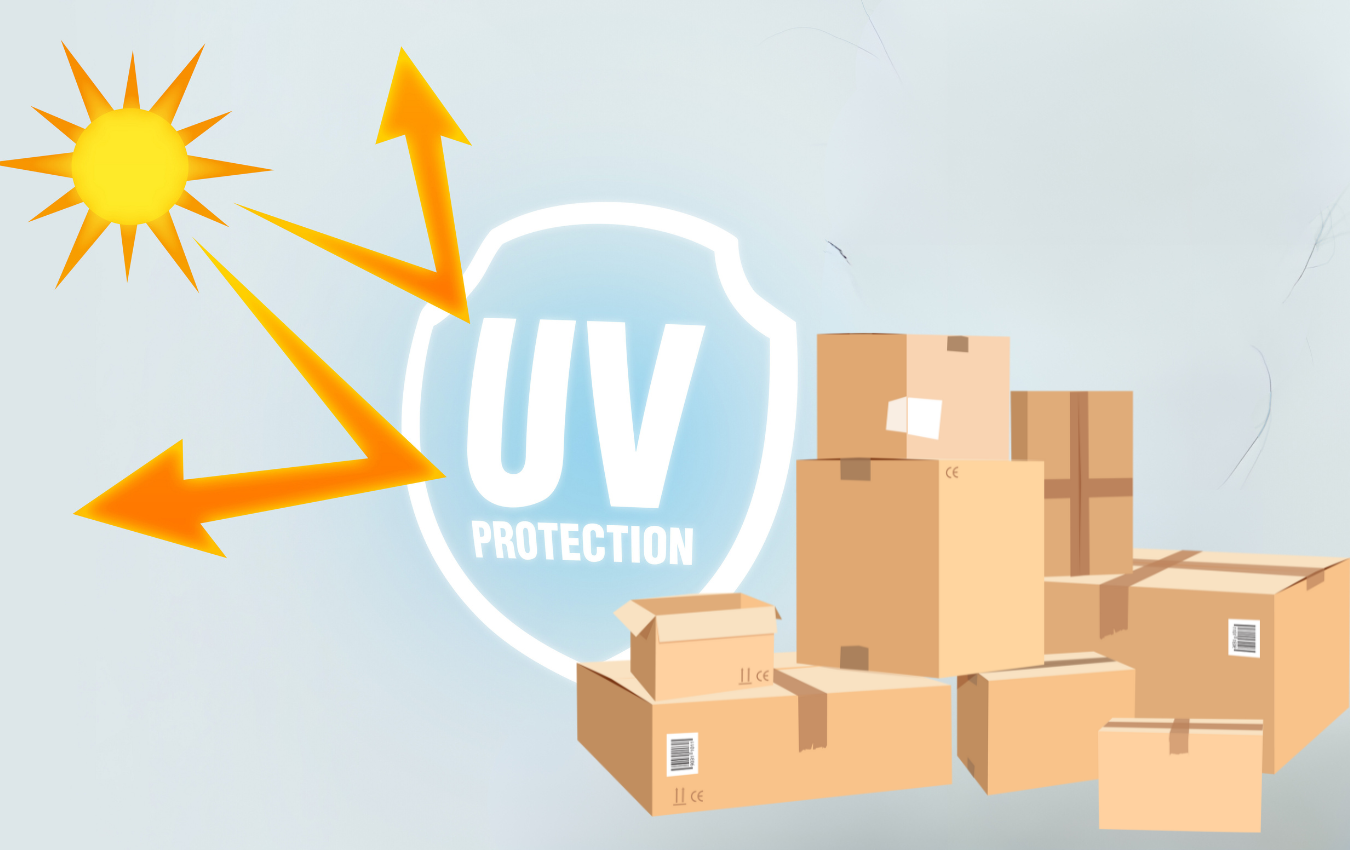
Ultraviolet (UV) rays can have detrimental effects on product packaging, leading to faded colors, weakened materials, and compromised product integrity. In industries where products are
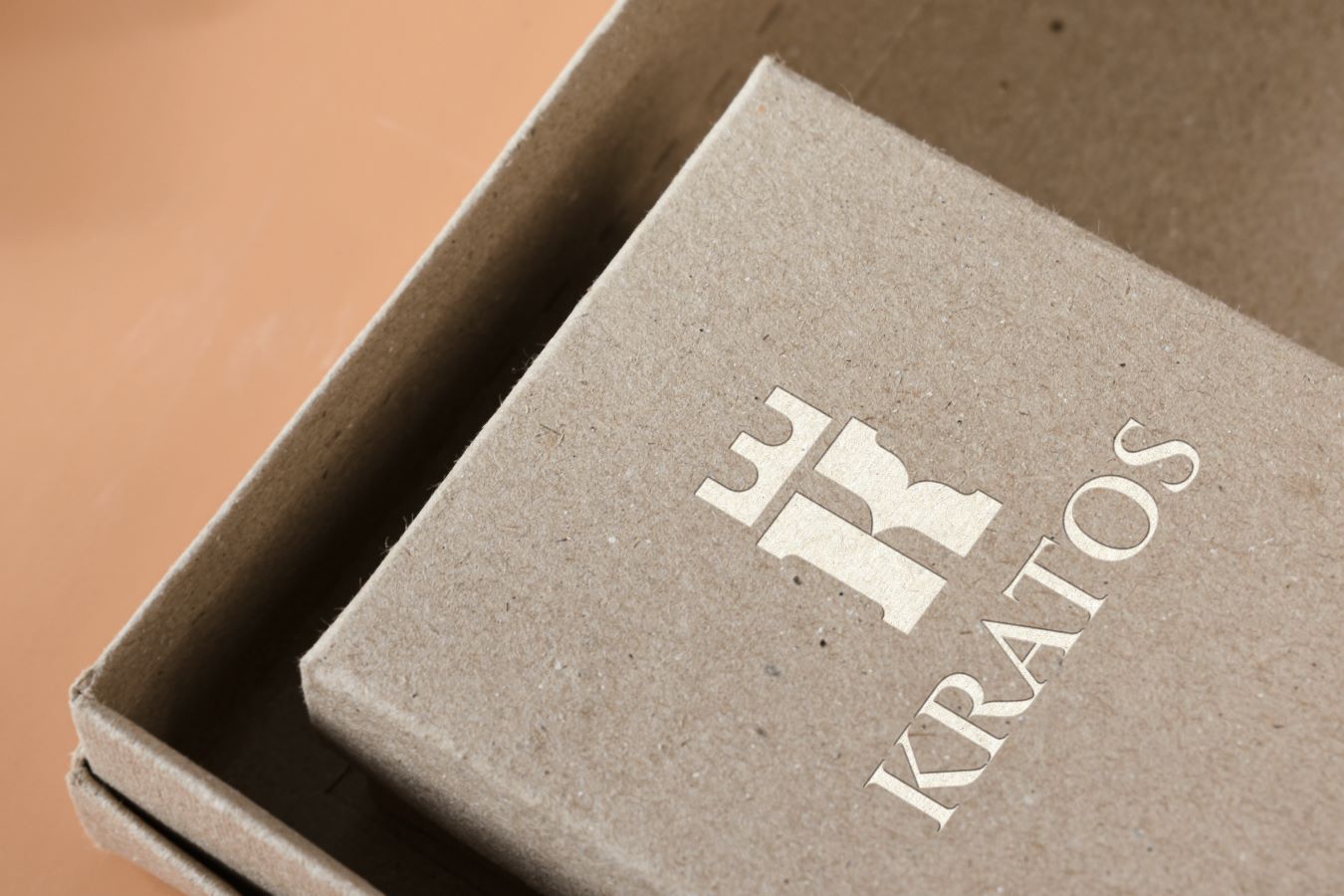
In the dynamic world of packaging, embossing stands out as a distinguished technique that adds depth and texture to product packaging, elevating the consumer experience.




